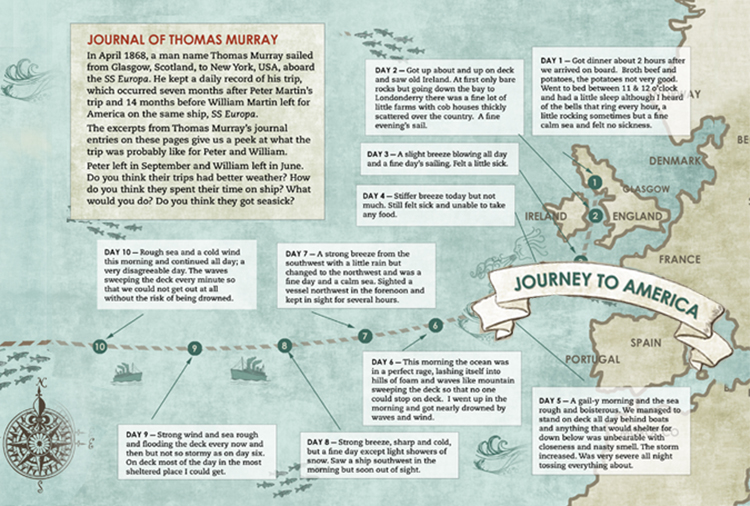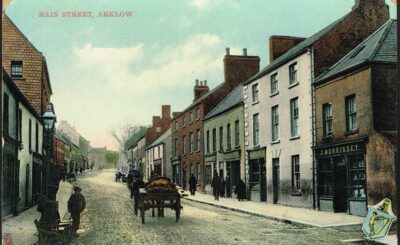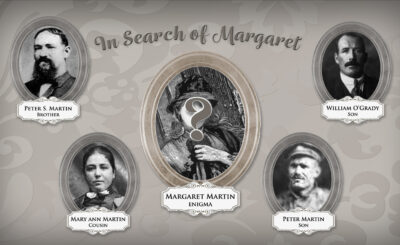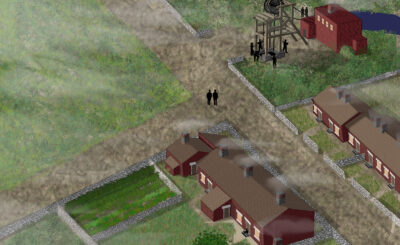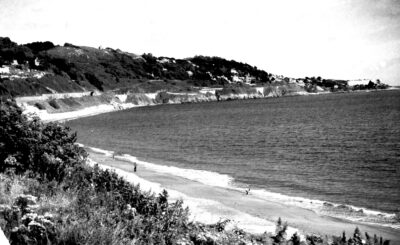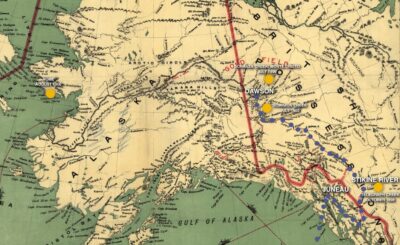O father, never learned to write
O mother, heart of eternal loving
Where are your stories?
How may I know you?
Are you not written in my bones,
Genetic blueprint of my heart, my brain, my passions?
Granted, Great Grandfather Martin was kind of busy and possibly had other things on his mind—but why, oh, why didn’t he tell us anything about his adventures?
Crossing oceans and continents, discovering wealth in the ground, silver, copper, and even gold—couldn’t he at least give us a clue to what it was like?
If you find yourself in the same boat (pun intended) I am in when it comes to your ancestors leaving few accounts, then you want to know all about parallel sourcing. If you don’t have a first-hand account from your ancestors, look for accounts from people who had parallel experiences and actually wrote them down! Want to know what it was like to travel stagecoach across the US? Somebody probably wrote it down. Want to know what it was like in World War I? Likewise.
It may not get you into your ancestor’s actual head and heart and thoughts, but at least it can get you on the same boat!
(See how I did that?)
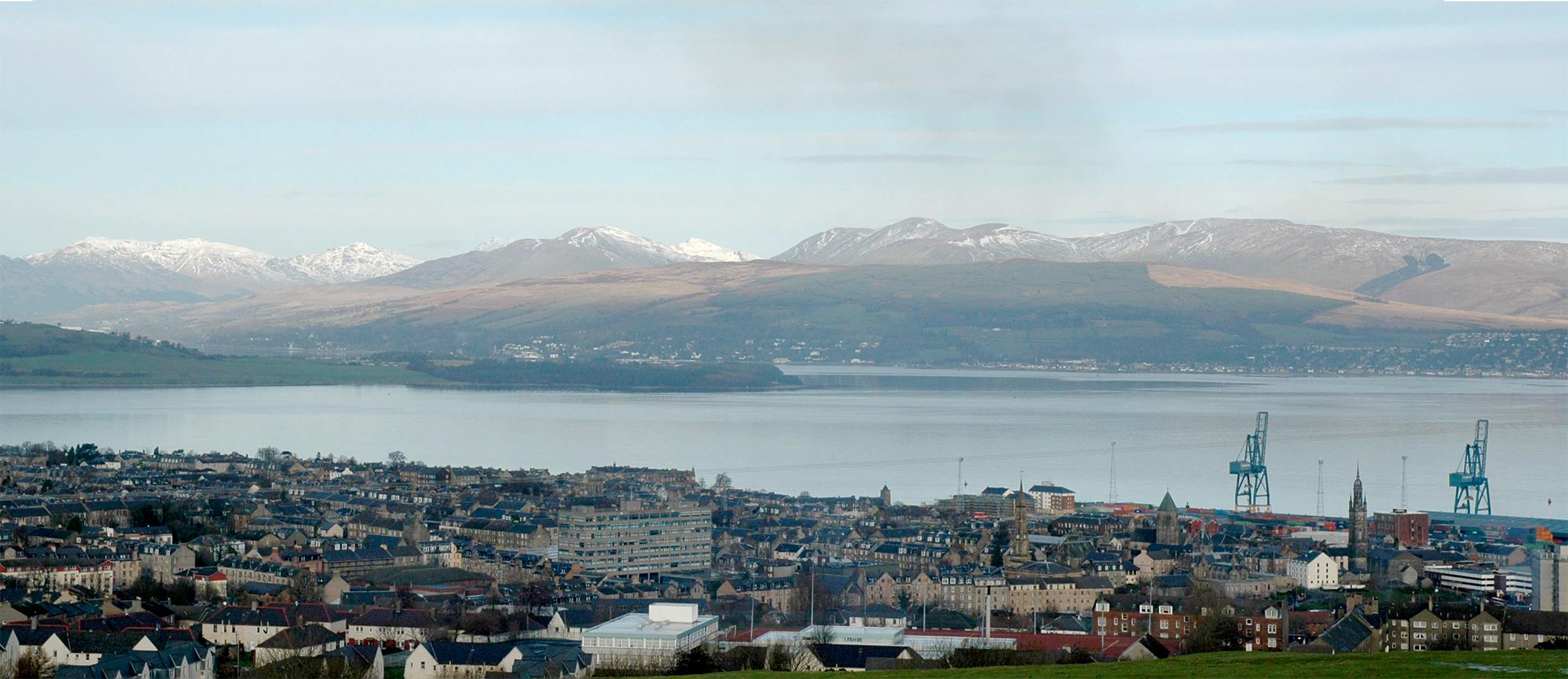
When Peter S. and William S. Martin sailed from Scotland to New York City, it was very likely the first time they had sailed in the open seas. It must have been extreme adventure for these already adventurous young men. Peter left on the SS Caledonia from the Tail of the Bank, which overlooked the Firth of Clyde. William left on the SS Europa from Finnieston Quay, which is a series of docks on the River Clyde. Each of their ships made a stop in Moville, Ireland, to pick up passengers before heading across the Atlantic.
Peter and William didn’t leave a record of their journeys (that we know of), however, we are fortunate that there is a young man who made that same trip who did keep a daily journal: Thomas Murray left Glasgow, Scotland for New York City, USA in April 1868 on the SS Europa.
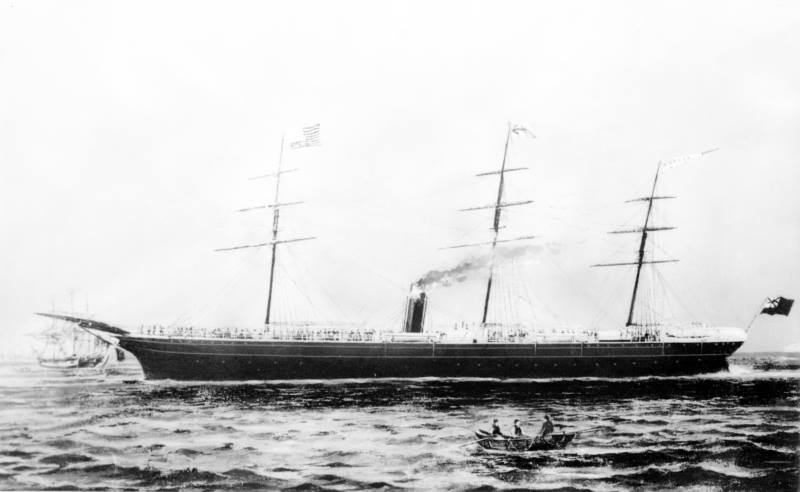
On that 18-day trip, they would have sighted passing ships, various seabirds and schools of fish, and surely must have wondered if they’d ever see land again!
Here is an edited version of Thomas Murray’s account:
DAY 1 Got dinner about 2 hours after we arrived on board. Broth beef and potatoes, the potatoes not very good. Went to bed between 11 & 12 o’clock and had a little sleep although I heard of the bells that ring every hour, a little rocking sometimes but a fine calm sea and felt no sickness.
DAY 2 Got up about and up on deck and saw old Ireland. At first only bare rocks but going down the bay to Londonderry there was a fine lot of little farms with cob houses thickly scattered over the country. A fine evening’s sail.
DAY 3 A slight breeze blowing all day and a fine day’s sailing. Felt a little sick.
DAY 4 Stiffer breeze today but not much. Still felt sick and unable to take any food.
DAY 5 A gail-y morning and the sea rough and boisterous. We managed to stand on deck all day behind boats and anything that would shelter for down below was unbearable with closeness and nasty smell. The storm increased. Was very severe all night tossing everything about.
DAY 6 This morning the ocean was in a perfect rage, lashing itself into hills of foam and waves like mountain sweeping the deck so that no one could stop on deck. I went up in the morning and got nearly drowned by waves and wind.
DAY 7 A strong breeze from the southwest with a little rain but changed to the northwest and was a fine day and a calm sea. Sighted a vessel northwest in the forenoon and kept in sight for several hours.
DAY 8 Strong breeze, sharp and cold, but a fine day except light showers of snow. Saw a ship southwest in the morning but soon out of sight.
DAY 9 Strong wind and sea rough and flooding the deck every now and then but not so stormy as on day six. On deck most of the day in the most sheltered place I could get.
DAY 10 Rough sea and a cold wind this morning and continued all day; a very disagreeable day. The waves sweeping the deck every minute so that we could not get out at all without the risk of being drowned.
DAY 11 A sharp breeze but a beautiful morning and as the day advanced it grew the better ‘til in the afternoon the sea was calm as a lake and the sun shone strong and clear. We saw a great multitude of fish swimming about following each other all in the same direction and bunting each other like young pigs new let loose.
DAY 12 Was rough through the night but had calmed down and was a fine morning though cold and sometimes a wave coming over deck in the forenoon. After breakfast the church bell rung so we went down to it. The cabin was the church and the services were conducted by three of the cabin passengers.
DAY 13 A fine day but soon changed into a snow storm and very cold. Saw a vessel and passed close by it. A brig from Baltimore with the red, white and blue flag hoisted as we came in sight as we did also to show where we belonged to. Keen frost set in. The deck was a great mess with the stairs half frozed.
DAY 14 Fair & calm but a very cold and piercing wind. Lifted out tickets at ten o’clock this morning and each asked his occupation and how many trunks or boxes he had. Saw a vessel to the southwest about noon It was in sight for several hours. We saw another vessel but ere we got up to it it was very dark.
DAY 15 Was awakened this morning by the steward telling the passengers to arise take up his bed and walk for they were going to wash out below the beds. Saw some fishes swimming about but there were only a few and not easily seen. Grew very misty and wet but cleared off and was a fine night.
DAY 16 A beautiful morning and a calm sea, the breeze being warmer. Passed a vessel to the northwest. Grew very misty so that little more than the bow of the ship could be seen. Stopped and sounded several times lest we run into the sand banks and kept the whistle blowing every few minutes.
DAY 17 Foggy all night. Continual blowing the whistle and sounded several times for the fog was so dense that nothing could be seen. Had nearly a collision with another vessel, it being only a few yards distance when it was seen. Saw land and lighthouse at the entrance of [New York] Bay. Cast anchor in the bay.
DAY 18 Next morning we went to the harbor of New York and passengers and luggage were put on a small boat and taken to Castle Gardens. After we had got inside we had to tell where we came from and where going. Over to the side bread and cheese was sold to appease the appetite a little after a long sail.
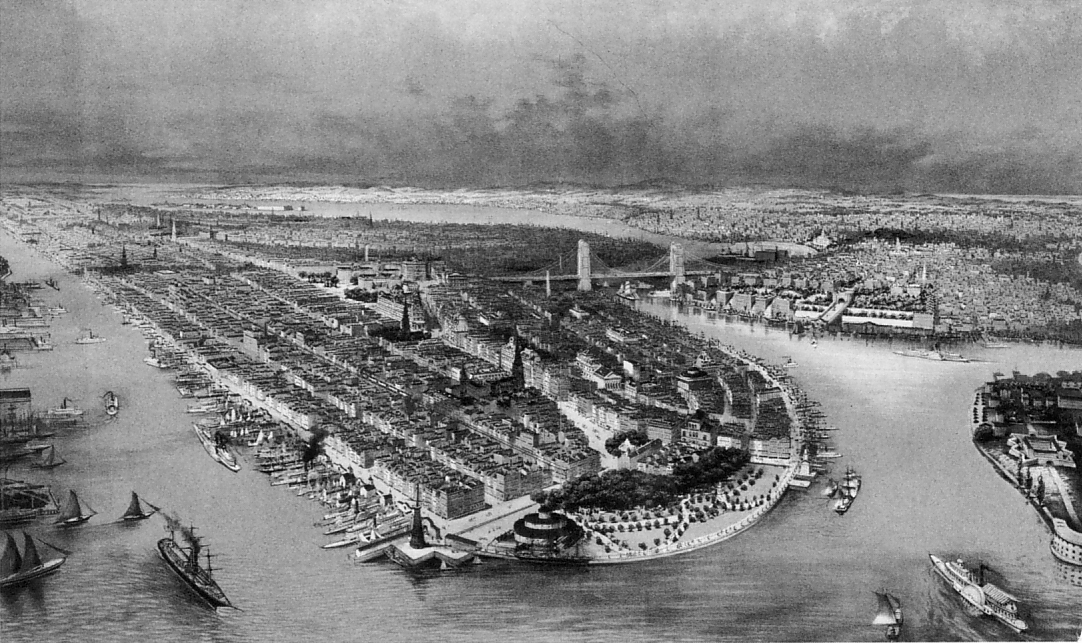
Peter and William also would have gone to Castle Gardens upon arrival, a precursor to Ellis Island. There they could get travel information and buy tickets, send and receive mail, and even get help finding local employment. The facility was created to help new Americans get off to a good start. There were plenty of shysters and bad characters looking out for green arrivals to swindle.
What did Peter and William experience exactly? We just don’t know.
But now I have a better sense of what it was like. And I can almost see Great Grandfather Martin, landlubber that he was, wretchedly lying in his bunk, countenance slightly green, cursing the seas in his Scottish brogue, ordering them to stop their heaving!

